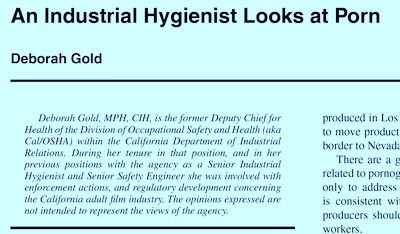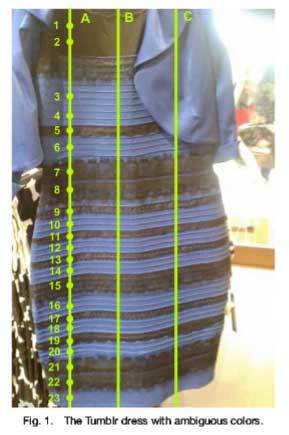Marc Abrahams's Blog, page 318
July 17, 2015
Forge a head: Two ears bad, Four ears good
A dummy head (or Kunstkopf) is sometimes used to create ‘binaural’ recordings. There can however, be a problem with this approach – in the sense that from the listener’s point of view, it’s not always completely clear which way is the head facing, could it be back to front? Researchers at the Virtual Acoustics and Audio Engineering Department and the Institute of Sound and Vibration Research of University of Southampton in the UK are aware of this drawback, and have suggested a novel remedy – the four-eared Kunstkopf.
“A new recording technique based on multichannel digital signal processing is suggested. A dummy head is modeled as a rigid sphere with four-ears (microphones). Successful reproduction of the recorded signals can be achieved all around a single listener using four loudspeakers in an anechoic environment, thus dealing with the problem of front-back confusion that appears with current dummy head recordings.“
See:Kahana, Y., Nelso .A., Kirkeby, O. and Hamada, H. (1997) Multi-channel sound reproduction using a four-ear dummy-head, in Proceedings of the 102nd Convention of the Audio Engineering Society, Munich, Germany, 1997, Paper 4465

July 16, 2015
Statues not far from Stalin World are in danger
The Guardian reports, from Vilnius, Lithuania:
[On] the Green Bridge over the Neris river in Vilnius the approaches are dominated by monuments to heroic Soviet archetypes: soldiers, workers, farmers and students.
But for how much longer? Plans to remove the badly corroded monoliths for repairs are proving highly controversial in Lithuania, particularly among the Russian-speaking minority…
After Lithuania restored its independence, most of the Soviet sculptures were removed and demolished. Some of the sculptures that remained intact were later collected and moved to the Grutas sculpture park near Druskininkai, where a local businessman, Viliumas Malinauskas, made a tourist attraction out of the monuments. His idea was awarded an Ig Nobel peace prize in 2001.
Here are some of the many statues in the Grutas sculpture park — an institution that most people call “Stalin World“:

An Industrial Hygienist Looks at Porn
Good health is, to a large extent, a matter of good engineering. This study takes that view:
“An Industrial Hygienist Looks at Porn,” Deborah Gold, Journal of Occupational and Environmental Hygiene, vol. 12, no. 8, 2015, pp. 184-190. (Thanks to Tom Gill for bringing this to our attention.).

The abstract says:
Deborah Gold, MPH, CIH, is the former Deputy Chief for Health of the Division of Occupational Safety and Health (aka Cal/OSHA) within the California Department of Industrial Relations. During her tenure in that position, and in her previous positions with the agency as a Senior Industrial Hygienist and Senior Safety Engineer she was involved with enforcement actions, and regulatory development concerning the California adult film industry….
Occupational health professionals can contribute to protectingemployees in this industry by recognizing the hazards in this industry as legitimate issues that are within our professional purview to address. Industrial hygienists can advocate for protecting workers against nicotine exposure without taking a position on banning the sale of cigarettes. Similarly, protection for workers in the adult film industry should not depend on individual views on the content of the material produced any more than requiring guards on printing presses should depend on the content of the publication.
Here’s a January 2013 NPR report on one aspect of this, that includes an interview with Deborah Gold: “Porn Industry Turned Off By L.A. Mandate For Condoms On Set“.

July 15, 2015
Podcast #20: Hey dude
The word “dude”, cheese, and baldness all turn up in this week’s Improbable Research podcast.
Click on the “Venetian blinds” icon — at the lower right corner here — to select whichever week’s episode you want to hear:
SUBSCRIBE on Play.it, iTunes, or Spotify to get a new episode every week, free.
This week, Marc Abrahams tells about:
Hey dude. (Kiesling, Scott F. (2004). ‘Dude.’ American Speech 79 (3): 281–305. Supplementary material about “Dude”. Featuring dramatic readings by Sue Wellington.) Here’s the trailer from the film Fast Times at Ridgemont High, which plays a large role in the study ‘Dude':
Cheddar and mozzarella physics. (Charalambides, M. N., J. G. Williams, and S. Chakrabarti (1995). ‘A Study of the Influence of Ageing on the Mechanical Properties of Cheddar Cheese.’ Journal of Materials Science 30: 3959–67. / Ak, M. Mehmet, and Sundaram Gunasekaran (1996). ‘Dynamic Rheological Properties of Mozzarella Cheese During Refrigerated Storage.’ Journal of Food Science 61 (3): 566–69. / Lee, Siew Kim, Skelte Anema, and Henning Klostermeyer (2004). ‘The Influence of Moisture Content on the Rheological Properties of Processed Cheese Spreads.’ International Journal of Food Science & Technology 39 (7): 763–71. Featuring dramatic readings by Jean Berko Gleason .)
Boys Will Be Boys research. (“Dung Lung: A Report of Toxic Exposure to Liquid Manure,” Lida N. Osbern and Robert O. Crapo, Annals of Internal Medicine, vol. 95, no. 33, September 1981, pp. 312–4. / “A Preliminary Report on the Use of Functional Magnetic Resonance Imaging with Simultaneous Urodynamics to Record Brain Activity During Micturition,” Jan Krhut, Jaroslav Tintera, Petr Holý, Roman Zachoval, and Peter Zvara, Journal of Urology, vol.188, no. 2, 2012, pp. 474–9. / “Magnetic Spheres as Foreign Body into the Bladder,” Tulio M. Graziottin, Daniel de Freitas G. Soares, Carlos T. Da Ros, Paulo R. Sogari, Cláudio Telöken, and Paulo Roberto Laste, Journal of Sexual Medicine, vol. 10, no. 10, October 2013, pp. 2590–2. Featuring dramatic readings by Andrew Berry.)
Why people go bald (maybe). (Yáñez Soler, Armando José (2004). ‘Cultural Evolution as a Possible Triggering or Causative Factor of Common Baldness.’ Medical Hypotheses 62 (6): 980–85. / Scarmeas, G. Levy, M.-X. Tang, J. Manly, and Y. Stern (2001). ‘Influence of leisure activity on the incidence of Alzheimer’s Disease.’ Neurology 57: 2236–42. Featuring dramatic readings by Jean Berko Gleason.)
A golden mean in your mouth. (Levin, E. I. (1978). ‘Dental Esthetics and the Golden Proportion.’ Journal of Prosthetic Dentistry, 40 (3): 244–52. Featuring dramatic readings by Jean Berko Gleason.)
The mysterious John Schedler perhaps did the sound engineering this week.
The Improbable Research podcast is all about research that makes people LAUGH, then THINK — real research, about anything and everything, from everywhere —research that may be good or bad, important or trivial, valuable or worthless. CBS distributes it, both on the new CBS Play.it web site, and on iTunes (and soon, also on Spotify).

Disambiguating the Lessons from the Ambiguous-Colored Dress
 Many will recall the intense Feb. 2015 internet and media storm around the ‘is-it-black/blue’ or ‘is-it-white/gold’ Tumblr dress photo. It’s now become the focus of an international group of colour scientists, who have performed the first [we believe] laboratory-based study centering around the famous photo. The team, from the universities of Granada and Extremadura in Spain, and the Rochester Institute of Technology, in the US, not performed a technical examination of the photo itself, but also purchased one of the dresses and measured spectral reflectance factors at five different blue/white and black/gold points using a GretagMacbeth Spectrolino spectrophotometer with 45/0 geometry. A number (7) of quite complex conclusions were reached, regarding not only the physical colour characteristics of the material, but also the psychological factors which might influence our perception of the dress. Noting that :
Many will recall the intense Feb. 2015 internet and media storm around the ‘is-it-black/blue’ or ‘is-it-white/gold’ Tumblr dress photo. It’s now become the focus of an international group of colour scientists, who have performed the first [we believe] laboratory-based study centering around the famous photo. The team, from the universities of Granada and Extremadura in Spain, and the Rochester Institute of Technology, in the US, not performed a technical examination of the photo itself, but also purchased one of the dresses and measured spectral reflectance factors at five different blue/white and black/gold points using a GretagMacbeth Spectrolino spectrophotometer with 45/0 geometry. A number (7) of quite complex conclusions were reached, regarding not only the physical colour characteristics of the material, but also the psychological factors which might influence our perception of the dress. Noting that :
“Properly, it must be considered that objects do not have a specific color, but a color which may change with the lighting source, background behind samples, and so forth. It must be said that color is a unique human perception, and the problem considered here is a good example of this fact. The complexity of the human visual system is another unquestionable fact.”
The full paper can currently be accessed here in the latest online issue of the journal Color Research & Application ‘What Can We Learn from a Dress with Ambiguous Colors?’
Note: The authors also alert us to more forthcoming scholarly considerations of the dress: “Currently, the Journal of Vision intends to publish a special issue on the perceived color of this dress.” We shall of course endeavour to keep readers informed.
BONUS: Video of the Spectrolino spectrophotometer at work:

July 14, 2015
A Gastropod taste and listen to electro-acoustical modified Pringles-crunching
The Gastropod podcast (perhaps the most delicious of all podcasts) tastes the taste-and-sound experimental research of 2008 Ig Nobel Prize winner Charles Spence. Here’s a snippet, in print form:
“Food and drink are among life’s most multisensory experiences,” Spence pointed out, so it’s perhaps hardly surprising that it occurred to him that the parchment skin illusion might work in the mouth, using food rather than clothing. He recruited 200 volunteers willing to eat Pringles for science, and played them modified crunching sounds through headphones, some louder and some more muffled, as they ate. And he found that he could make a 15 percent difference in people’s perception of a stale chip’s freshness by playing them a louder crunch when they bit into it.
“The party version” of this trick, according to Spence, was developed by colleagues in the Netherlands and Japan. Volunteers were asked to crunch on chips in time with a metronome, while researchers played crunching sounds back, in perfect synchrony, through their headphones. All was well until the researchers replaced the crunching with the sound of breaking glass—and “people’s jaws just freeze up.”….
Give it a listen.

Looking at Breasts: A Natural and Unnatural History
In her book Breasts: A Natural and Unnatural History, Florence Williams looks at breasts, and at how other people look at breasts, in ways that are scholarly, technological, and entertaining. This video lets you look at Williams looking at those things in those ways:

The Great Attempt to Catalog All Fetishes (including the pacemaker fetish)
 On 28 October 2004 we humans took a giant step towards cataloguing all of our sexual fetishes. An Italian/Swedish research team, led by Claudia Scorolli [pictured here] at the University of Bologna, downloaded data from hundreds of online fetish discussion groups and spent the next three years analysing their haul. Then they published a study in the International Journal of Impotence Research: Relative Prevalence of Different Fetishes….
On 28 October 2004 we humans took a giant step towards cataloguing all of our sexual fetishes. An Italian/Swedish research team, led by Claudia Scorolli [pictured here] at the University of Bologna, downloaded data from hundreds of online fetish discussion groups and spent the next three years analysing their haul. Then they published a study in the International Journal of Impotence Research: Relative Prevalence of Different Fetishes….
So begins this month’s Improbable Research column in The Guardian.
* * *
BONUS: Here’s a piece of info that did not appear (because the column has to fit into a set space in the print edition of The Guardian) in the published version of the column:
Two of the fetish study’s co-authors, Stefano Ghirlanda and Magnus Enquist, had been awarded an Ig Nobel Prize in 2003, for a study called “Chickens Prefer Beautiful Humans“, which was not about fetishes.

July 13, 2015
This and That and The Syntax of Concealment
How can you hide secret information in plain text? You could try non-obvious manipulations of this and that. First, some background …

 Steganographers have been endeavouring to devise methods for hiding information since at least 1499 (and probably before that). A subset, known as Stegotext, hides info in apparently normal text – for instance by manipulating the formatting in subtle ways. But there are disadvantages with this method, if the text is copied and re-formatted the message is lost.
Steganographers have been endeavouring to devise methods for hiding information since at least 1499 (and probably before that). A subset, known as Stegotext, hides info in apparently normal text – for instance by manipulating the formatting in subtle ways. But there are disadvantages with this method, if the text is copied and re-formatted the message is lost.
A new (2007) method is proposed which relies instead on covert manipulation of complementisers (e.g. ‘that’) and/or relativisers (e.g. ‘that’). It was devised by Dr. Brian Murphy, who’s now at Queen’s University, Belfast, and Dr. Carl Vogel of the Computational Linguistics Lab, O’Reilly Institute, Trinity College, Ireland. The new method relies on the addition, deletion, and/or swapping of words such as ‘this, that, or ‘who’ without in any way altering the sense of the text. The researchers say their method has a success rate of 96% and achieves a “bandwidth of 0.3 bits per sentence.” (or, as Improbable prefers to put it, 1 bit every three sentences, or so.)
See:
‘The syntax of concealment: reliable methods for plain text information hiding’ (in Proceedings of SPIE – The International Society for Optical Engineering. Vol. 6505, 2007.)
or:
‘The syntax of concealment: reliable methods for plain text information hiding’ (in Proceedings of Security, Steganography, and Watermarking of Multimedia Contents IX, 2007.)
BONUS QUIZ: Could we have we covertly hidden any information in this post?

July 12, 2015
Further progress in male nipple positioning
Since 2009, progress has been made in devising techniques for determining ideal male nipple positions. (see previous Improbable item on Divine Proportions in male nipple re-positioning) A research team from the department of Plastic and Reconstructive Surgery at the Keio University School of Medicine, Tokyo, have now contributed to the body of work – noting that :
“Although a need exists for plastic surgeons to consider nipple position in men in certain situations, literature pertaining to the anatomic features of male nipples is limited.”
To redress this limitation, the team performed an empirical study with 50 Japanese men between February 2010 to May 2014, and have subsequently published the results of their new research in the Aesthetic Surgery Journal, 2015, Vol 35(2) see: ‘An Anatomic Study of Nipple Position and Areola Size in Asian Men’ (Shogo Kasai, MD; Yusuke Shimizu, MD, PhD; Tomohisa Nagasao, MD, PhD; Fumio Ohnishi, MD; Toshiharu Minabe, MD, PhD; Akira Momosawa, MD, PhD; and Kazuo Kishi, MD, PhD)
BONUS: The Esquire magazine report “Women Are Covering Their Nipples With Male Nipples on Instagram“.

Marc Abrahams's Blog
- Marc Abrahams's profile
- 14 followers






